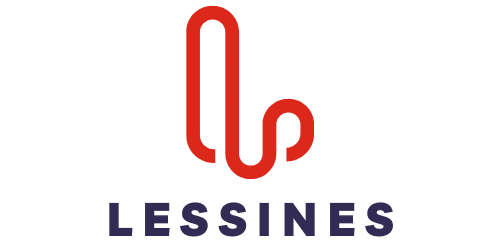What Are the Best Energy Performance Upgrades for Victorian-Era Homes in the UK?

In the quest for a more sustainable future, energy efficiency at home has become a topic of great importance. If you reside in a Victorian-era home in the UK, you might be grappling with the challenge of making your home more energy-efficient. These homes, while full of character and charm, are notoriously difficult to heat and insulate, contributing to higher energy costs and carbon emissions.
Improving the energy efficiency of your Victorian home doesn’t mean sacrificing its unique, historical character. With the right measures in place, you’ll not only reduce your energy consumption but also enhance the comfort and longevity of your home. In this article, we’ll explore some of the best energy performance upgrades you can consider for your Victorian-era home.
En parallèle : How to Implement Electric Vehicle Infrastructure in Existing Multi-Unit Dwellings?
Loft Insulation
The first area to consider when aiming to improve energy efficiency in your Victorian home is the loft. More heat is lost through the roof than any other part of the house. Loft insulation is an effective measure to prevent this heat loss, and it’s typically simple to install in most Victorian buildings.
Loft insulation works by slowing down the movement of heat from the warm interior of the house to the colder outside. This means your home will retain more heat in the winter and stay cooler in the summer. It’s a well-rounded approach to improving the energy efficiency of your home.
A lire en complément : How Can Real Estate Developers Integrate Communal Workspaces in Suburban Developments?
Wall Insulation
Victorian homes often have solid walls, which can lose more heat than cavity walls. Insulating these walls can be a game-changer in terms of reducing heat loss. Insulation can be applied externally or internally, though each method carries its own advantages and potential challenges.
External wall insulation involves adding a layer of insulating material to the outer wall, then covering it with a special type of plaster or cladding. This not only enhances the heat retention of your home but also provides added weatherproofing and improves the appearance of the exterior.
On the other hand, internal wall insulation is a more affordable option, though this method can reduce the floor space slightly and requires more extensive work, including the removal and reinstallation of skirting boards and electrical sockets.
Efficient Windows
Victorian-era homes often feature single-glazed sash windows, which can be a significant source of heat loss. Upgrading to double-glazed windows can vastly improve your home’s energy efficiency. The gap between the panes in a double-glazed window is filled with an inert gas, significantly reducing heat transfer and keeping your home warmer for longer.
While replacing windows can be a substantial investment, it’s one that will pay for itself over time through reduced heating costs. Additionally, double-glazed windows can also reduce noise pollution and offer better security.
Draught-Proofing Measures
A significant amount of energy can be wasted in Victorian-era homes due to draughts. These can occur anywhere there are gaps in your home’s exterior shell, such as around windows and doors, floorboards, or chimneys.
Draught-proofing measures help to seal these gaps, preventing cold air from entering and warm air from escaping. This can be achieved through various methods, such as installing weatherstripping around windows and doors, sealing gaps in the floorboards, or installing a chimney draught excluder.
Moisture Control and Ventilation
Finally, it’s crucial to consider moisture control and ventilation when upgrading your Victorian home’s energy performance. Victorian homes were built to ‘breathe’, with air flowing through the fabric of the building to control moisture. However, some modern energy efficiency measures can disrupt this flow, leading to issues with damp and condensation.
To prevent this, ensure that your home is adequately ventilated and consider using materials that allow moisture to pass through. This will allow your home to retain its original ‘breathable’ nature while still benefitting from increased energy efficiency.
In conclusion, while Victorian homes may pose unique challenges when it comes to energy efficiency, a combination of loft and wall insulation, efficient windows, draught-proofing measures, and proper moisture control can significantly improve their energy performance. By doing so, you’ll not only create a more comfortable living environment but also contribute to creating a more sustainable future.
Heat Pumps: A Sustainable Heating Solution
When it comes to finding ways to enhance the energy efficiency of older homes, heat pumps are gaining popularity as a sustainable heating solution. These devices essentially work by transferring heat from one location to another, rather than generating heat directly as traditional heating systems do.
There are two main types of heat pumps to consider: air source heat pumps (ASHPs) and ground source heat pumps (GSHPs). ASHPs extract heat from the outside air and use it to heat the inside of your home. Even in colder weather, there’s still enough heat in the air to warm your home.
GSHPs, on the other hand, use pipes buried in the garden to extract heat from the ground. This heat can then be used to heat radiators, underfloor or warm air heating systems and hot water in your home.
Heat pumps are incredibly energy-efficient, converting energy from natural sources into usable heat in your home. This not only reduces your home’s carbon emissions but can also lower your energy bills. However, it’s essential to note that installing a heat pump is not a minor task. It requires space for installation and may necessitate changes to your home’s heating system.
Nonetheless, if you are willing to make this investment, a heat pump can be a transformative upgrade for your Victorian home, combining modern renewable energy technology with the timeless charm of a bygone era.
Solar Panels: Harness the Power of the Sun
In addition to heat pumps, solar panels offer another avenue for Victorian homeowners to increase their homes’ energy efficiency. Solar panels harness the power of the sun, transforming it into usable electricity for your home. This process significantly reduces your reliance on traditional, non-renewable energy sources, leading to lower energy consumption and carbon emissions.
Solar panels can be fitted to the roof of your Victorian home, although it’s important to consider the orientation and slope of your roof to maximise sunlight exposure. Bear in mind that while solar panels can supply a substantial portion of your home’s electricity needs, they work best in conjunction with other energy-saving measures, such as proper insulation and draught-proofing.
While the initial investment in solar panels can be significant, there are several schemes available in the UK to help homeowners offset these costs. Over time, you’ll see a considerable reduction in your energy bills, making solar panels a worthwhile investment for enhancing your home’s energy performance.
Conclusion: A Victorian Home Adapted for the Future
Preserving the architectural and historical charm of Victorian homes while making them more energy-efficient might seem challenging. However, with careful planning and strategic upgrades, it is undoubtedly achievable. From loft and wall insulation to draught-proofing measures, from harnessing renewable energy sources with heat pumps and solar panels to managing moisture control and ventilation, there are numerous ways to enhance your home’s energy performance.
By taking these steps, you’ll successfully reduce your home’s energy consumption and carbon emissions, cut down on your energy bills, and create a more comfortable living environment. More importantly, you’ll be contributing to a more sustainable future, proving that even the oldest of homes can play a part in our world’s greener future.
